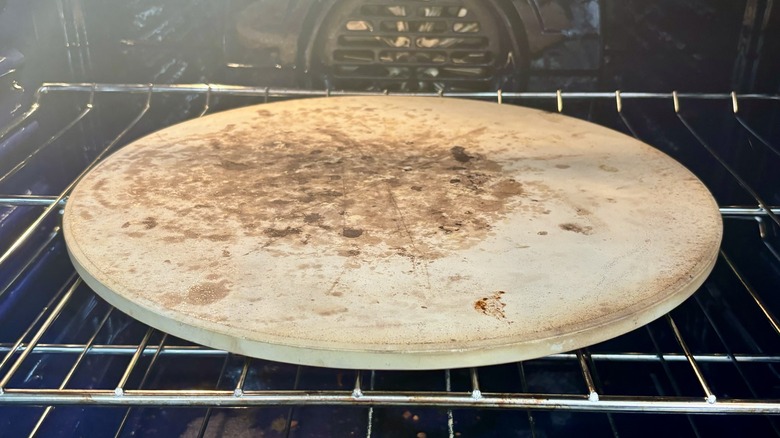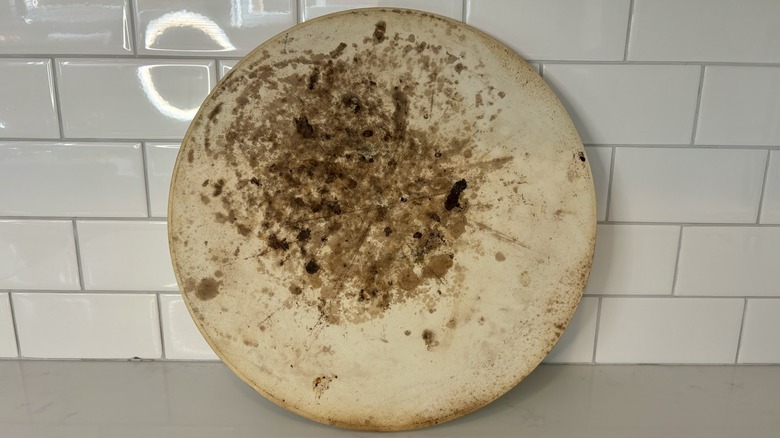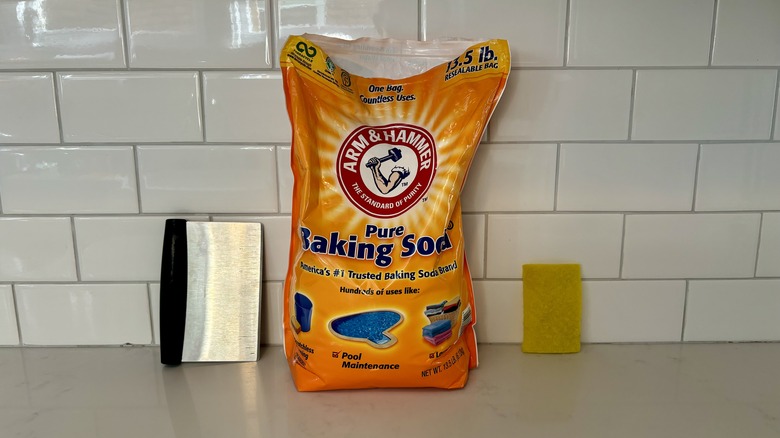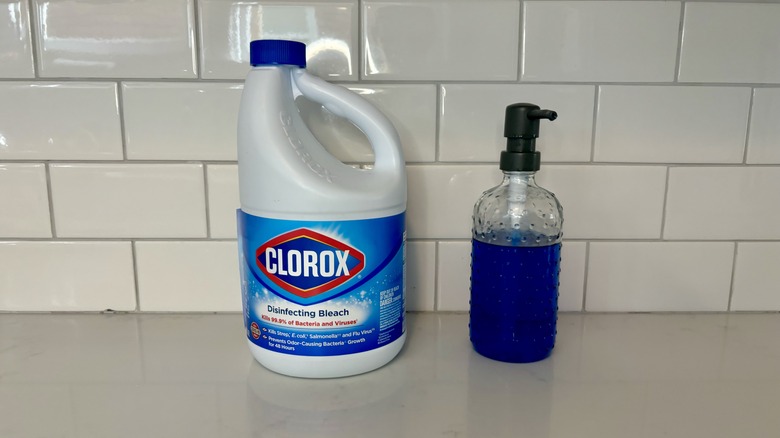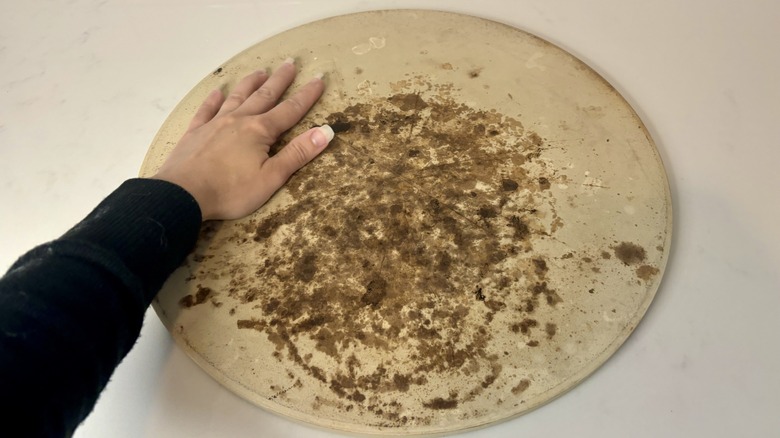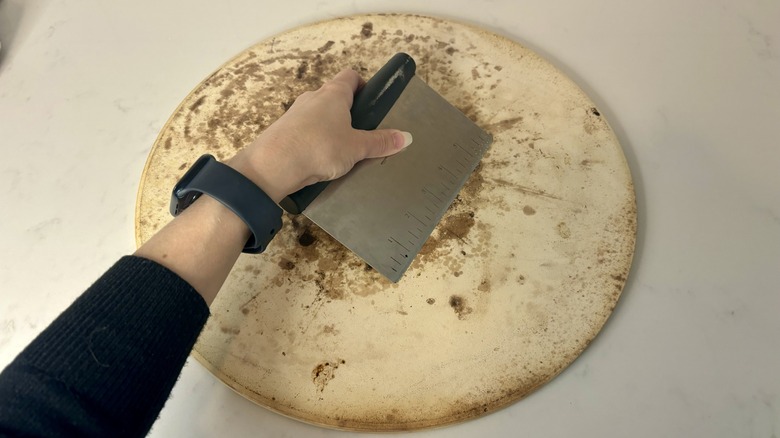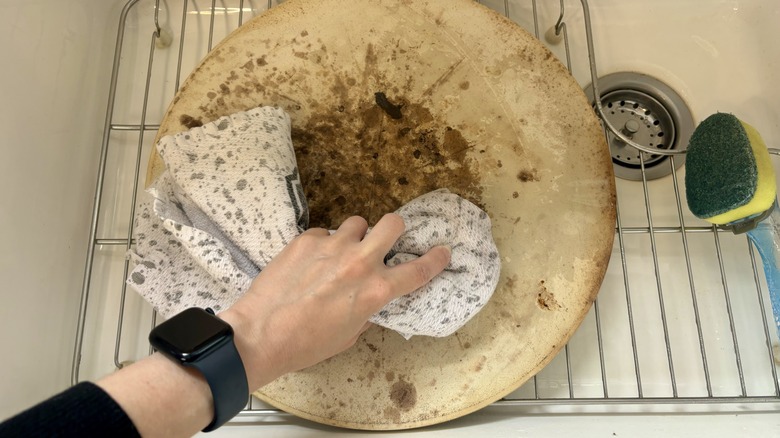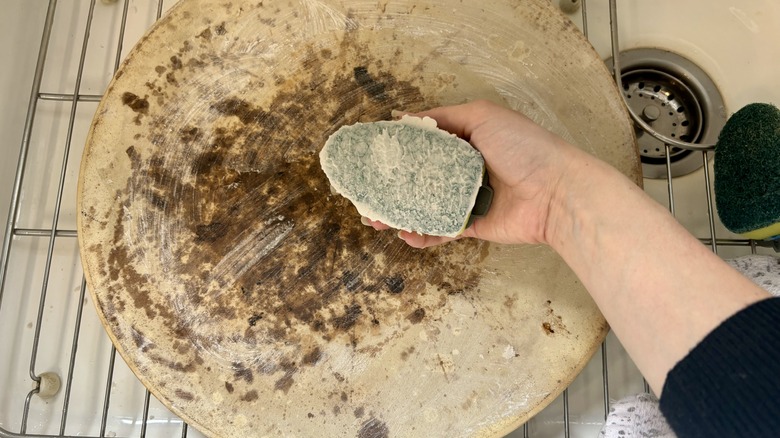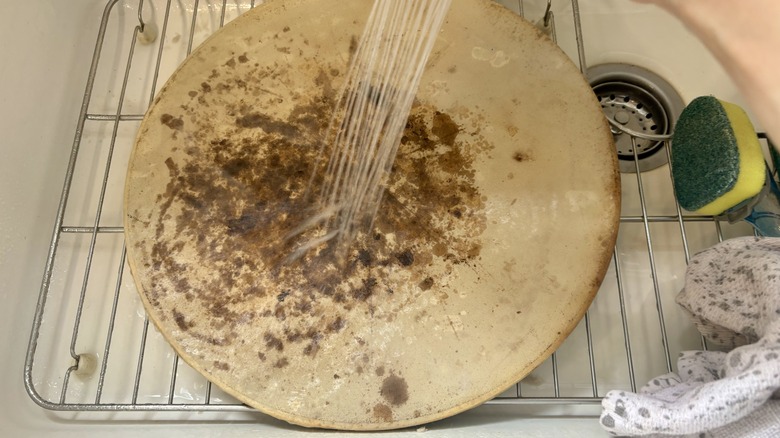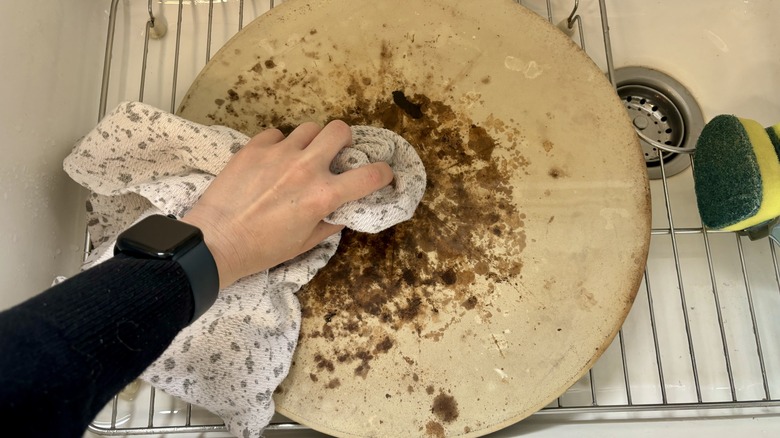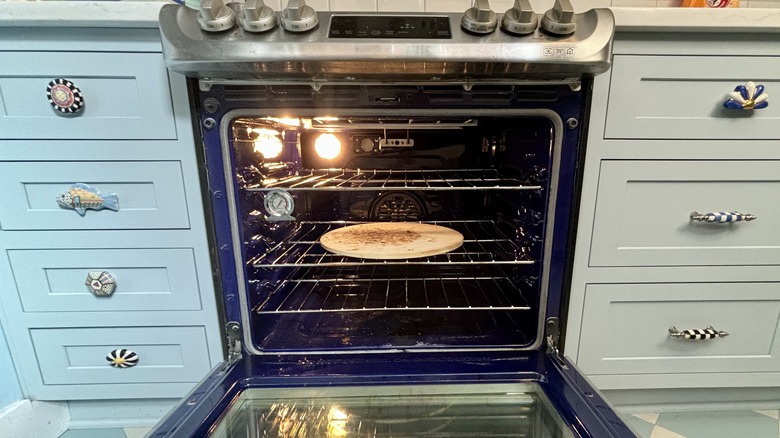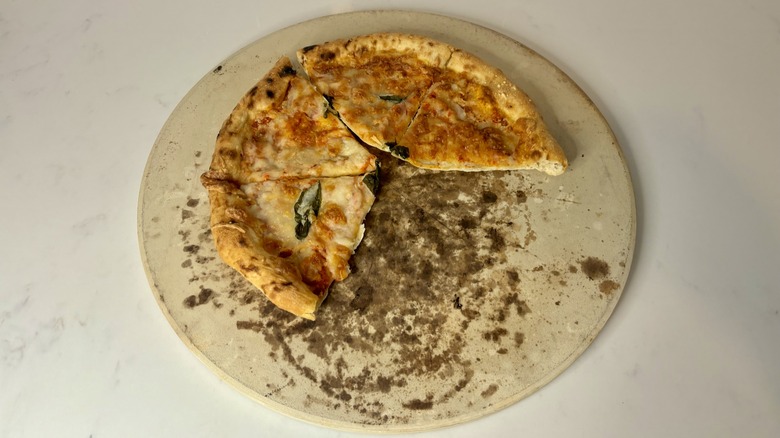How To Clean Your Pizza Stone Without Ruining It
If you are new to the world of pizza stones, you may be wondering how you clean them. Unlike a traditional baking sheet, pizza stones cannot just be washed down or thrown in the dishwasher; they require slightly different care. The good news is this care is incredibly easy to give and, in some ways, easier than traditional washing up.
No matter how careful you are when cooking, your pizza stone will inevitably get food and grime on it. Luckily, we are here to show you how to get it all off and keep your pizza stone in tip-top condition. That way, you can make the best pizza of your life without finding little burned on pieces of old food or tasting the residue of soap. No one wants that. Whether you're new to cooking with a pizza stone or have an old stone looking for some freshening up, this article will help you bring your pizza stone back to life.
What is a pizza stone?
There are several different pizza cooking tools out there that sound similar but are, in fact, quite different. A pizza stone, as its name implies, is a large flat stone designed for baking pizza. Pizza stones take awhile to heat up, but then they hold that heat well, which helps cook the underside of the pizza more effectively. Pizza stones are often made out of ceramic or clay and are incredibly heavy. This is different from a pizza steel, which — again, as the name implies — is made out of steel.
Both of these are different from a pizza pan, which is just a large pan you can bake your pizza in. Pizza pans do not have the same heat retention as pizza stones and will not cook the same way.
Tools you will need
The good news is that pizza stones are generally easy to clean. You will only need water, a rough brush or sponge, a washcloth, and some vinegar or baking soda.
If you have a bench scrape, that can be helpful as well, as it's able to scrape off large chunks of food that may be stuck on your pizza stone. This process does not require any specialty materials.
What not to do
You may have noticed something you thought was crucial missing from the tools list: soap. While it may seem like a given to use soap, many manufacturers actually recommend against using dish soap on a pizza stone. Pizza stones tend to be porous, meaning that if you use dish soap on them, there is a good chance the stone will hold onto a small amount of soap, which in turn can make your future pizzas taste soapy. Not very appetizing.
On the same front, don't use bleach or any other harsh chemicals. Food safety is important, but pizza stones are literally built to be insanely hot — we're talking over 1000 F in many cases. Sterilization starts at 300 F.
How clean is clean
Finally, it is important to understand what "clean" means when referring to a pizza stone. Pizza stones, as discussed, are porous. That means that they absorb stains pretty easily. It may be tempting to want to clean every little bit of staining on your pizza stone, but you really don't need to. Staining will not affect the functionality of your pizza.
If it bothers you, we will show you ways to mitigate that staining. But the goal here is to keep a clean surface free of debris and germs, not necessarily to keep it looking like it never touched a pizza.
Scrape your pizza stone
Begin by using a plastic or metal bench scraper or a brush and brush all food debris off. All the large chunks should be able to be scraped off. There may be a small residue left, but this is okay. We will take care of it with the next steps.
Wipe down with a warm washcloth
Next, wet down your stone with warm water. Use a wet washcloth or a clean sponge to wash the stone of any remaining food debris.
Optional: Make a paste of baking soda and water and scrub stains
This step is predominantly for the people who really want to get some of that staining off. It is not necessary but can be helpful. Make a paste of water and baking soda by adding water to the powder in a separate bowl or container until it forms a paste-like consistency.
Then, put some of the paste on your sponge, and use it to scrub the surface of the pizza stone, targeting any problem spots. This can help with staining and with any tough baked-on food. It will not completely remove staining though.
Rise your stone
If you used a baking soda mixture, rinse your stone and wipe it down again. Make sure you remove all the baking soda residue.
Fully dry your stone
Fully dry your pizza stone before storing it. An easy way to do this is to put it in a warm oven to evaporate all extra moisture. You want to fully dry it before storing in any cabinets to avoid trapping moisture and causing problems down the line.
Pizza stone maintenance
Pizza stones are tough, but they are not infallible. Avoid putting your pizza stone in an oven that's already hot. The stone needs time to adjust to the temperature.
Put the stone in the oven and allow it to preheat with the oven itself. This will help you avoid cracking your stone. To keep your pizza stone clean, make sure you wipe it down after each use.
How to use a pizza stone
Pizza stones aren't just great for making pizza. They're useful for any baking project if you want a nice solid heat source. For example, pizza stones are game changers when it comes to pie. If "The Great British Baking Show" has taught us anything, it is that nobody likes a soggy bottom on their pie. Pizza stones help hold heat right at the bottom of the crust, where it can be hard to get a good bake. It doesn't matter whether you pie is sweet, like an apple pie, or a savory like cheesy roasted tomato pie — soggy bottoms are no match for the pizza stone's heat-holding power.
Pizza stones are also useful for baking bread and making roasted vegetables. You don't have to put the food right on the stone, either — placing a pan or pie plate on the pizza stone will still help it conduct heat and cook your food to perfection.
